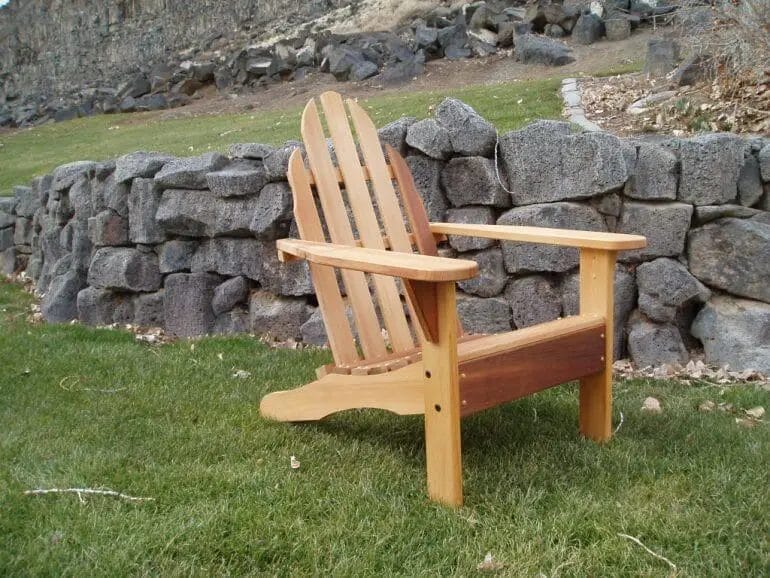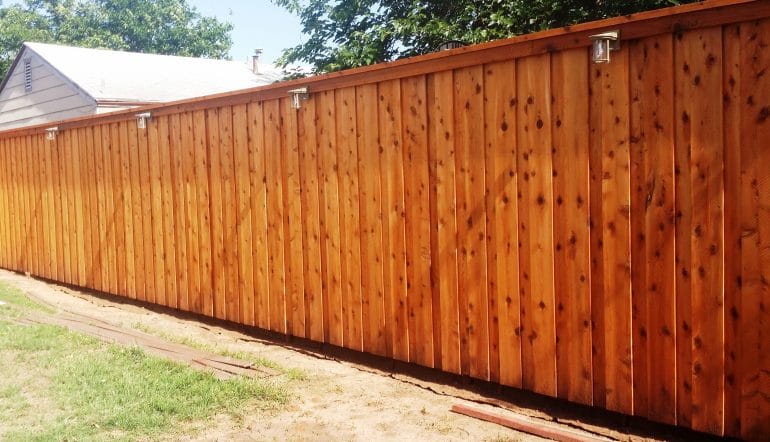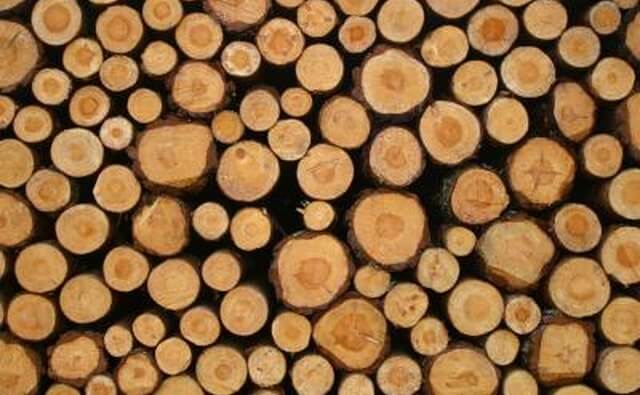Cedar wood is an excellent choice for outdoor use due to its natural durability and resistance to rot and insect damage. With its beautiful grain patterns and pleasant aroma, cedar wood enhances the aesthetic appeal of any outdoor space. It is commonly used for outdoor furniture, decks, fences, and siding. Furthermore, cedar wood contains natural oils that act as a preservative, ensuring its longevity even when exposed to harsh weather conditions. Choose cedar wood for your outdoor projects to enjoy both its beauty and durability.

Durability and Resistance of Cedar Wood in Outdoor Environments
Cedar wood is well-known for its durability and natural resistance to various outdoor elements. This makes it an excellent choice for outdoor applications such as decking, siding, and furniture. In this section, we will explore the unique qualities of cedar wood that contribute to its long-lasting performance in outdoor environments.

1. Natural Resistance to Decay
One of the key factors that make cedar wood highly durable in outdoor environments is its natural resistance to decay. Cedar contains natural oils and preservatives that act as a barrier against fungi, insects, and other organisms that can cause wood rot. These natural properties help to protect the wood from moisture damage and extend its lifespan.
2. Enhanced Weather Resistance
Cedar wood is also known for its exceptional weather resistance. It can withstand extreme temperatures, heavy rainfall, and intense sunlight without deteriorating or warping. The inherent stability of cedar wood makes it highly resistant to expansion and contraction, allowing it to maintain its shape and structural integrity over time.
3. Dimensional Stability
Another advantage of cedar wood is its remarkable dimensional stability. It has a low shrinkage factor, which means it retains its original size and shape even when exposed to fluctuating moisture levels. This makes cedar a reliable choice for outdoor structures where stability and structural integrity are crucial.
4. Natural Insect Repellent
Unlike other types of wood, cedar has natural insect-repellent properties. The scent of cedar wood acts as a deterrent to insects like termites, carpenter ants, and beetles, reducing the risk of infestation and damage to outdoor structures. This makes cedar wood a popular choice for outdoor projects in areas prone to insect activity.
5. Resistance to Rot and Decay
Cedar wood’s resistance to rot and decay is a result of its natural oils, which act as a protective barrier against moisture. This natural resistance makes cedar wood highly suitable for applications that are constantly exposed to moisture, such as decks, fences, and outdoor furniture.
6. Low Maintenance Requirements
One of the reasons why many homeowners and builders choose cedar wood for outdoor projects is its low maintenance requirements. Cedar wood does not require regular sealing or staining to maintain its durability and appearance. Over time, cedar wood weathers gracefully, developing a distinct silver-gray patina that adds character to outdoor structures.
7. Environmental Benefits
Aside from its durability and resistance, cedar wood also offers environmental benefits. It is a renewable resource and considered an environmentally friendly choice for outdoor projects. Cedar trees are fast-growing and can be sustainably harvested, making it an eco-conscious option for those concerned about sustainability and conservation.
Summary
Cedar wood is a highly durable and resilient material for outdoor applications. Its natural resistance to decay, enhanced weather resistance, dimensional stability, insect repellent properties, and low maintenance requirements make it an excellent choice for decking, siding, and furniture. Additionally, cedar wood offers environmental benefits as a renewable and sustainable resource. By choosing cedar wood for your outdoor projects, you can enjoy long-lasting, beautiful structures that withstand the test of time.

How to Properly Maintain Cedar Wood for Outdoor Use
If you have outdoor furniture or structures made of cedar wood, it’s important to properly maintain them to ensure their longevity and keep them looking beautiful. Cedar wood is a popular choice for outdoor use due to its natural resistance to decay, insects, and moisture. However, it still requires regular maintenance to protect it from the elements and preserve its natural beauty.
1. Clean Regularly
Regular cleaning is essential for maintaining cedar wood. Use a soft brush or cloth to remove any dirt, dust, or debris from the surface. You can also use a mild detergent mixed with water to clean more stubborn stains. Avoid using harsh chemicals or power washers, as they can damage the wood.
2. Apply a Protective Finish
To protect cedar wood from the effects of sun and moisture, it’s recommended to apply a protective finish. There are several options available, including oil-based or water-based finishes, as well as clear or tinted options. Before applying any finish, make sure the surface is clean and dry. Follow the manufacturer’s instructions for application and reapplication intervals.
3. Seal Cracks and Gaps
Inspect your cedar wood regularly for any cracks or gaps. These can allow moisture to penetrate the wood, leading to rot or decay. Use a high-quality outdoor wood filler to seal any cracks or gaps. Once the filler has dried, sand it down to ensure a smooth surface. You can then proceed to apply the protective finish.
4. Protect from Direct Sunlight
Extended exposure to direct sunlight can cause cedar wood to fade and become brittle over time. To prevent this, consider placing your cedar furniture or structures in shaded areas or use umbrellas or awnings to provide additional protection. If it’s not possible to avoid direct sunlight, make sure to apply a UV-protective finish to minimize sun damage.
5. Regularly Inspect for Insects
While cedar wood is naturally resistant to insects, it’s still important to regularly inspect for any signs of infestation. Look out for tiny holes, sawdust, or any other indications of insect activity. If you spot any pests, consult with a professional pest control service to address the issue promptly.
6. Store Properly during Winter
If you live in an area with harsh winters, it’s crucial to take the necessary steps to protect your cedar wood during this season. Clean and dry the wood thoroughly before storing it in a dry, well-ventilated area. Cover the furniture or structures with a breathable waterproof cover to prevent moisture buildup.
7. Regularly Reapply Protective Finish
Over time, the protective finish on cedar wood can wear off due to exposure to the elements. It’s important to regularly reapply the protective finish to ensure ongoing protection. Follow the manufacturer’s instructions for the recommended reapplication frequency.
8. Avoid Harsh Chemicals and Pressure Washing
When cleaning or maintaining your cedar wood, avoid using harsh chemicals or pressure washers. These can strip away the natural oils in the wood and cause damage. Stick to mild detergents and gentle cleaning methods to preserve the integrity of the wood.
In summary, proper maintenance is crucial for keeping cedar wood in optimal condition for outdoor use. Regular cleaning, application of a protective finish, sealing cracks and gaps, protecting from direct sunlight, insect inspections, proper winter storage, and regular reapplication of the protective finish are all important steps to ensure the longevity and beauty of your cedar wood furniture or structures.

Creative Ideas for Using Cedar Wood in Outdoor Designs
When it comes to outdoor designs, cedar wood is a popular choice due to its natural durability and attractiveness. Cedar wood not only adds a touch of warmth and beauty to your outdoor space but also offers numerous creative possibilities for incorporating it into your design. Whether you’re looking to build a deck, create a stunning fence, or add some rustic charm to your garden, here are some creative ideas for using cedar wood in your outdoor designs.
1. Cedar Wood Deck
A cedar wood deck is a classic choice for any outdoor space. The rich color and natural grain of cedar wood add a timeless beauty to your deck, making it an inviting and cozy place to relax or entertain. Cedar wood is resistant to rot and insect damage, making it an ideal material for building a durable and long-lasting deck. Consider adding built-in benches, planters, or even a pergola to enhance the functionality and aesthetics of your cedar wood deck.
2. Cedar Wood Fence
A cedar wood fence not only provides privacy and security but also adds a touch of elegance to your outdoor space. Cedar wood’s natural resistance to decay and insect damage makes it an excellent choice for constructing a long-lasting and low-maintenance fence. You can opt for a traditional picket fence design or get creative with horizontal or vertical slats for a modern look. Consider adding decorative elements such as lattice panels or trellises to enhance the visual appeal of your cedar wood fence.
3. Cedar Wood Garden Furniture
Transform your outdoor space into a cozy retreat by adding cedar wood garden furniture. From benches and chairs to tables and loungers, cedar wood furniture not only offers comfort and functionality but also blends seamlessly with nature. The natural oils present in cedar wood act as a repellent to insects, making it an ideal choice for outdoor furniture that is exposed to the elements. You can leave the cedar wood furniture unfinished to develop a beautiful silver patina over time or apply a protective sealant to maintain its original color.
4. Cedar Wood Planter Boxes
Add a touch of charm and greenery to your outdoor space with cedar wood planter boxes. Cedar wood’s natural resistance to moisture and decay makes it perfect for constructing durable and long-lasting planters. You can create custom-sized planter boxes to fit any space, whether it’s a small balcony or a spacious garden. Consider arranging multiple cedar wood planter boxes of varying sizes to create a stunning display of colorful flowers, herbs, or vegetables.
5. Cedar Wood Outdoor Structures
Take your outdoor design to the next level by incorporating cedar wood into various structures. Whether it’s a pergola, gazebo, or outdoor kitchen, cedar wood adds a touch of elegance and beauty to these functional spaces. The natural oils present in cedar wood act as a natural preservative, protecting the structure from rot and decay. Consider adding climbing plants or vines to enhance the visual appeal of your cedar wood outdoor structures.
6. Cedar Wood Pathways and Bridges
Create a picturesque landscape by using cedar wood to build pathways and bridges in your outdoor space. Cedar wood’s natural durability and resistance to moisture make it an ideal material for constructing pathways that withstand heavy foot traffic and various weather conditions. You can create a rustic wooden walkway or an arched bridge, adding visual interest and functionality to your outdoor design.
7. Cedar Wood Accent Walls
Add a touch of warmth and character to your outdoor design by incorporating cedar wood accent walls. Whether it’s a patio, gazebo, or outdoor kitchen, cedar wood accent walls create a focal point and elevate the overall aesthetics of your space. Cedar wood’s natural beauty and unique grain pattern make each accent wall a work of art. Consider staining or painting the cedar wood in your desired color to match your outdoor theme.
8. Cedar Wood Outdoor Shower
Create a luxurious and refreshing experience in your outdoor space with a cedar wood outdoor shower. Cedar wood’s natural resistance to rot and decay makes it an excellent choice for constructing a shower that can withstand outdoor elements. The aromatic scent of cedar adds a soothing and spa-like ambiance to your outdoor shower experience. Combine it with natural stone or pebble flooring to create a serene oasis in your own backyard.
In summary, cedar wood offers endless creative possibilities for enhancing your outdoor designs. From decks and fences to furniture and structures, incorporating cedar wood adds a touch of natural beauty and durability to your outdoor space. Consider these creative ideas to make the most of cedar wood and create an inviting and visually appealing outdoor environment.
Compare and Contrast Cedar Wood with Other Options for Outdoor Applications
When it comes to choosing the right material for outdoor applications, such as decking, fencing, or siding, it’s important to consider durability, aesthetics, and maintenance requirements. Cedar wood is a popular choice due to its natural beauty and inherent resistance to decay. In this section, we will compare and contrast cedar wood with other common options to help you make an informed decision for your outdoor projects.
1. Cedar Wood vs. Pressure-Treated Wood
Cedar wood and pressure-treated wood are both commonly used for outdoor applications, but they have some key differences. Cedar wood is known for its natural resistance to insects, decay, and rot, which eliminates the need for chemical treatments. On the other hand, pressure-treated wood is infused with chemicals to enhance its resistance to decay and insect damage. While pressure-treated wood may initially offer better durability, it can be less visually appealing and may require regular maintenance to maintain its appearance.
2. Cedar Wood vs. Composite Decking
Composite decking is a man-made material typically composed of a mixture of wood fibers and recycled plastics. While composite decking offers excellent durability and low maintenance compared to natural wood, it lacks the natural beauty and warmth of cedar wood. Cedar wood has a distinct grain pattern and color variations that give it a unique charm. However, composite decking is highly resistant to fading and staining, making it a good option for homeowners who prefer a low-maintenance outdoor space.
3. Cedar Wood vs. Redwood
Redwood is another popular choice for outdoor applications due to its natural resistance to decay and insect damage. It shares similar characteristics with cedar wood in terms of durability and aesthetics. However, redwood tends to be more expensive than cedar wood, making cedar a more budget-friendly option for those looking for a similar level of performance and beauty. Additionally, redwood trees are primarily found in California, which can limit its availability in certain regions.
4. Cedar Wood vs. Vinyl
Vinyl is a synthetic material often used for outdoor applications like fencing and siding. It offers excellent durability and low maintenance, as it is resistant to rot, warping, and insect damage. However, vinyl lacks the natural look and feel of cedar wood. Cedar wood has a warm, organic appearance that adds character to outdoor spaces. Additionally, vinyl can fade over time due to exposure to sunlight, while cedar wood weathers gracefully, developing a beautiful silver-gray patina.
5. Cedar Wood vs. Tropical Hardwoods
Tropical hardwoods, such as Ipe and Teak, are renowned for their exceptional durability and natural resistance to decay. They are highly resistant to insect damage and can withstand harsh outdoor conditions. However, tropical hardwoods tend to be more expensive than cedar wood and may require regular maintenance, such as oiling or staining, to maintain their appearance. Cedar wood offers a more affordable alternative with comparable resistance to decay and a unique aesthetic appeal.
In summary, cedar wood stands out as a versatile and appealing option for outdoor applications. Its natural resistance to insects, decay, and rot, along with its distinct beauty, make it a preferred choice for many homeowners. While other options like pressure-treated wood, composite decking, redwood, vinyl, and tropical hardwoods also have their advantages, cedar wood strikes a balance between durability, aesthetics, and affordability.
FAQs
Is cedar wood good for outdoors?
Yes, cedar wood is an excellent choice for outdoor use. It is naturally resistant to rot, decay, and insect damage, making it durable and long-lasting. Cedar’s natural oils also act as a barrier against moisture, preventing warping and cracking. Additionally, cedar has a beautiful natural appearance that enhances outdoor spaces.
Conclusion
In conclusion, cedar wood is an excellent choice for outdoor applications. Its natural durability and resistance to rot, decay, and insect infestation make it a popular option for outdoor furniture, decking, and fencing. The aromatic scent and unique grain pattern of cedar wood add to its appeal, making it a visually pleasing choice. Additionally, cedar wood’s ability to withstand harsh weather conditions, such as extreme heat and cold, makes it a reliable and long-lasting option for outdoor use. So, whether you’re looking to enhance your outdoor living space or protect your investment, cedar wood is a smart and sustainable choice.